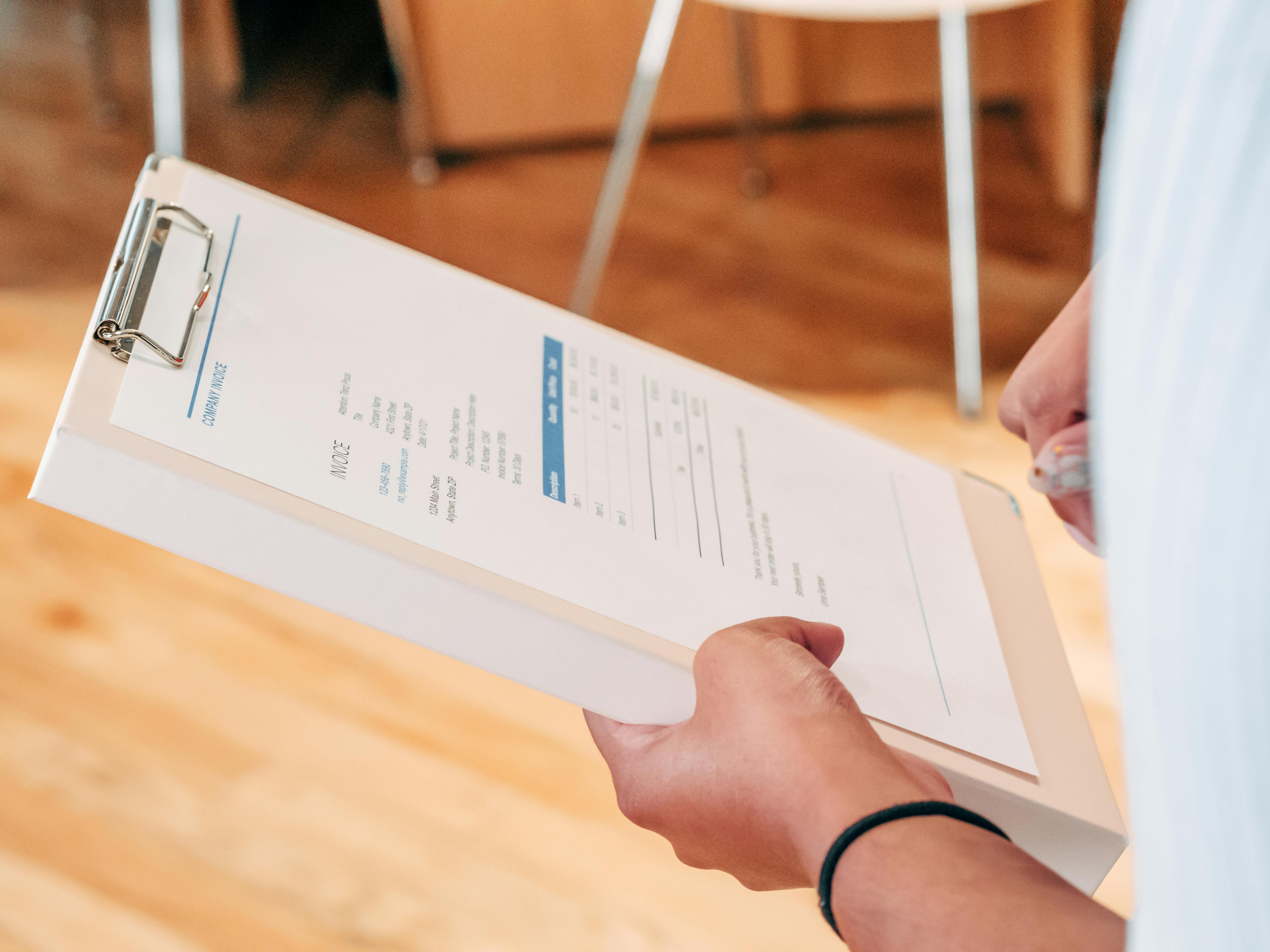
Unveiling the Power of Traffic Bots: Boost Website Traffic and Uncover the Pros and Cons
Traffic bots, also known as web robots or web spiders, are automated programs designed to interact with websites and generate traffic. They simulate human behavior by performing actions such as browsing web pages, clicking on links, filling out forms, and more. These bots can be programmed to follow specific instructions and mimic various user activities.
The primary purpose of traffic bots is to increase website traffic, boost search engine rankings, and improve overall visibility online. By mimicking organic human engagement on a website, these bots aim to create the illusion of high activity and popularity, tricking search engines into giving the site higher rankings.
There are different types of traffic bots available, each serving different purposes. Some bots provide general automated browsing capabilities, simulating page visits and clicks to generate traffic. Others simulate human actions within specific contexts, such as filling out forms for lead generation or interacting with chatbots for customer support.
While traffic bots can be advantageous in certain scenarios, it is essential to understand the potential risks and ethical considerations associated with their use. When used irresponsibly or for malicious purposes, traffic bots can interfere with legitimate website activity, manipulate search engine rankings unfairly, and hinder accurate analysis of website performance.
Furthermore, search engines like Google have sophisticated algorithms that can detect unnatural bot-generated traffic patterns. If identified, these search engines may penalize websites, resulting in decreased visibility or even banning of the site from search results.
In recent years, there has been an increased demand for specialized traffic bots that target specific industries or platforms. Social media platforms often face challenges with fake followers and likes generated by such bots. These fraudulent practices not only misrepresent a user's genuine influence but also dilute the authenticity of interactions within the community.
To stay on the right side of internet ethics, it is important to deploy traffic bots responsibly and ethically. Using automated traffic generation carefully and transparently can provide benefits, such as testing website scalability, improving user experience by reducing downtime during peak traffic, or obtaining data insights.
However, it is crucial to remember that organic human engagement is ultimately what holds true value. Genuine user interactions and quality content should always be prioritized over artificially generated traffic. Striking a balance between utilizing traffic bots effectively and maintaining ethical practices ensures long-term success and credibility for websites or online businesses.
 The Role of Traffic Bots in SEO Strategies: Elevating Your Website Rankingtraffic bots are automated computer programs designed to generate traffic to a website or webpage. These bots can imitate human browsing patterns and behavior or simulate requests for a particular website. They play a significant role in SEO strategies and can help elevate the ranking of a website in search engine results pages (SERPs).
The Role of Traffic Bots in SEO Strategies: Elevating Your Website Rankingtraffic bots are automated computer programs designed to generate traffic to a website or webpage. These bots can imitate human browsing patterns and behavior or simulate requests for a particular website. They play a significant role in SEO strategies and can help elevate the ranking of a website in search engine results pages (SERPs).One of the major benefits of using traffic bots in SEO strategies is the ability to improve website ranking through increased traffic. Search engines like Google consider the amount of traffic a website receives as an important factor in determining its relevance and popularity. By using traffic bots, website owners can attract more visitors and potentially improve their search rankings.
Another key aspect is that traffic bots can influence the bounce rate of a website. Bounce rate refers to the percentage of visitors who leave a website after viewing just one page. High bounce rates can negatively impact a site's ranking as it suggests low user engagement or irrelevant content. Traffic bots can help lower the bounce rate by simulating user interactions with multiple pages on the website, signaling to search engines that users find value in the content.
Furthermore, traffic bots can also generate online activity and engagement on a website, such as clicking on links, submitting forms, or leaving comments. These activities create valuable signals for search engines and signify user engagement and interactivity with the site. With increased activity and engagement, search engines tend to rank the site higher due to the perceived quality and relevance.
It is important to note that while traffic bots can provide short-term benefits in terms of improved visibility and rankings, their long-term effects may be questionable or even detrimental. Search engines constantly refine their algorithms to identify and filter out malicious or deceptive practices, including artificially generated traffic. If search engines detect suspicious activity originating from traffic bots, it may lead to penalties or even deindexing of the affected website.
Moreover, an overreliance on traffic bots may divert attention from other essential aspects of SEO, such as creating high-quality content, optimizing website architecture, and building genuine backlinks. These elements are crucial for sustained organic growth and a positive user experience.
As the SEO landscape continues to evolve, it is essential for website owners and SEO practitioners to adapt and prioritize strategies that align with search engine guidelines and user expectations. While traffic bots can offer some advantages, they should be used cautiously and as part of a comprehensive SEO approach focused on providing value to users in a legitimate and ethical manner.
 Pros and Cons of Using Traffic Bots for Website GrowthPros of Using traffic bots for Website Growth:
Pros and Cons of Using Traffic Bots for Website GrowthPros of Using traffic bots for Website Growth:- Increased Website Traffic: Traffic bots can generate a significant amount of web traffic to your site, improving its visibility and potentially attracting new visitors.
- Boost in SEO Rankings: The extra website traffic generated by bots can improve your search engine rankings, resulting in higher organic visibility and more potential customers.
- Time-saving: Using a traffic bot can save you time and effort in promoting your website, as it automates the process of driving traffic.
- Cheaper Than Other Advertising Methods: Compared to paid advertising techniques like Google AdWords or social media campaigns, employing traffic bots is often more cost-effective.
- Enhanced Conversion Rates: If the traffic bots attract genuinely interested visitors, there is a higher possibility of converting them into paying customers.
Cons of Using Traffic Bots for Website Growth:
- Poor Quality Traffic: Traffic bots often generate low-quality traffic that lacks genuine engagement. Visitors may quickly leave your site, increasing bounce rates and negatively impacting conversion rates.
- Risk of Penalization: Depending on the type of traffic bot used and how it operates, there is a potential risk of violating search engine guidelines. This could lead to penalties from search engines such as reduced rankings or even get your site banned.
- No Guarantee of Targeted Audience: Traffic bots might bring random visitors to your website who are not genuinely interested in your products or services. This lack of targeting reduces the chances of converting those visitors into actual customers.
- Damaged Reputation: If users notice abnormal traffic patterns on your site, or suspect the use of bots, they may lose their trust in your brand. This can result in a damaged reputation and reduced future website growth.
- Ethical Concerns: Using traffic bots can be seen as unethical by some individuals since it generates fake interactions rather than genuine user engagement.
It is essential to carefully weigh these pros and cons before deciding whether to use traffic bots for website growth. Understand the potential risks involved and consider alternative strategies for genuine audience engagement and sustainable long-term growth.
 Distinguishing Between Legitimate and Malicious Traffic BotsDistinguishing between legitimate and malicious traffic bots can be challenging, considering the vast array of automated mechanisms operating on the web. Nonetheless, there are several common characteristics and identifiable factors that can help differentiate between the two.
Distinguishing Between Legitimate and Malicious Traffic BotsDistinguishing between legitimate and malicious traffic bots can be challenging, considering the vast array of automated mechanisms operating on the web. Nonetheless, there are several common characteristics and identifiable factors that can help differentiate between the two. To shed light on identifying these bots, it's crucial to understand that traffic bots can serve both legitimate and malicious purposes. Legitimate traffic bots typically aim to enhance user experience, increase engagement, or collect data for analysis. Malicious traffic bots, on the other hand, often have deceitful objectives like generating fake views, manipulating analytics stats, or attempting to infiltrate networks.
One critical factor for distinguishing among traffic bots is the source of their origin. Legitimate bots usually come from reputable companies, search engine crawlers, social media platforms, or partnerships with trustworthy organizations. Conversely, malicious bots often operate from dubious sources and are more likely to exhibit suspicious behavior.
Analyzing behavior patterns is another effective method to distinguish between legitimate and malicious bots. Legitimate traffic bots typically follow established standards defined by industry protocols and adhere to a website's best practices. These bots often exhibit consistent and predictable patterns while accessing a website's content. By contrast, malignant traffic bots may display erratic behavior characterized by quick repetitive actions, excessive requests directed at specific pages or resources, or unusual website traversal patterns indicating unauthorized access attempts.
Monitoring network activity can provide further insights into differentiating between the two bot types. Legitimate traffic bots should interact with a website similarly to real users, accessing various pages while following navigation links. These authorized bots generally maintain modest network consumption and do not tend to overwhelm server resources in most cases. However, malicious traffic bots might demonstrate abnormal network behavior such as requesting all resources from a website in a short timeframe, rapidly establishing connections from distinctive IP addresses, or employing proxies and VPNs to obfuscate their origin.
Another helpful approach is examining payload characteristics. Specifically analyzing the data transmitted in headers or payloads of bot requests can provide clues to differentiate between good and bad intentions. For instance, legitimate traffic bots might include specific information related to their entity, such as IP addresses indicating a reputable organization or implementation of standardized request headers. On the other hand, malicious bots often appear with incomplete or modified headers, inconsistent payload formats or content, or utilize IP addresses flagged for suspicious activities.
While these approaches facilitate distinguishing between legitimate and malicious traffic bots, it's essential to stay updated with current bot strategies and their evolving tactics as technology advances. Leveraging specialized tools and AI algorithms designed to combat malicious bots can significantly assist in effectively defending against potential threats and ensuring the integrity and security of online platforms.
 How Traffic Bots Can Impact Your Website Analytics and SEO Positivelytraffic bots can have a positive impact on your website analytics and SEO. These bots are designed to imitate human user behaviors, generating traffic and interactions on your site. While there are ethical concerns surrounding the use of bots, they can benefit your website in several ways:
How Traffic Bots Can Impact Your Website Analytics and SEO Positivelytraffic bots can have a positive impact on your website analytics and SEO. These bots are designed to imitate human user behaviors, generating traffic and interactions on your site. While there are ethical concerns surrounding the use of bots, they can benefit your website in several ways:1. Enhanced Analytics: Through engaging with your website like real users, traffic bots can increase the overall performance indicators in your analytics report. They create additional traffic, which leads to higher visit counts, page views, and time spent on your site. These metrics play a significant role in showing the success of your website to potential advertisers or investors.
2. Improved SEO Ranking: Search engines consider various factors when determining search result rankings, with website traffic being one of them. Traffic bots can help boost the number of visitors to your site, which positively influences SEO parameters like organic ranking. Increased organic rankings may potentially lead to more visibility, higher click-through rates, and improved brand reputation.
3. Faster Indexing: When search engines notice increased traffic coming to your site via bots, they typically crawl and index web pages at a quicker pace. This means any new content or updates you make will be indexed faster and become visible in search engine results sooner.
4. Expanded Reach and Visibility: By utilizing traffic bots strategically, you can direct targeted traffic to specific pages or sections of your website. This targeted approach allows you to reach a broader audience interested in your niche. Additionally, higher traffic volumes attract the attention of other users who may organically discover your site through organic searches or referrals.
5. Positive User Signal: Bots can generate various user signals that search engines consider while evaluating the quality of a website. These signals include longer session durations, lower bounce rates, and multiple page interactions per visit. The presence of these positive user signals improves the perceived credibility and usability of your site by search engines, increasing the likelihood of receiving favorable rankings.
6. Data Validity: Depending on how you use traffic bots, they can provide valuable data for analysis. Bots can create simulated conversions or interactions on your website. This data allows you to test different aspects of your site's performance without impacting actual user experiences. By analyzing these results, you can optimize your website design, content, and user journey to improve conversion rates and overall user satisfaction.
However, it's essential to balance the positives with potential negatives when considering the use of traffic bots. While they can bring short-term benefits, relying solely on bots for long-term success may negatively impact your website's credibility and user experience. Additionally, search engines are becoming smarter in identifying bot-generated traffic, potentially resulting in penalties or loss of organic rankings if caught engaging in unethical practices.
Therefore, it is important to consult professional advice and consider alternative methods to boost your website's traffic and SEO standing organically while taking ethical considerations into account.
 Navigating the Ethical Implications of Using Traffic BotsNavigating the Ethical Implications of Using traffic bots
Navigating the Ethical Implications of Using Traffic BotsNavigating the Ethical Implications of Using traffic botsWhen discussing the use of traffic bots, it becomes crucial to delve into the ethical considerations surrounding their implementation. While traffic bots offer various benefits, such as generating web traffic and boosting online visibility, ethical concerns cannot be overlooked. Here are some key aspects to consider when exploring the ethical implications of using traffic bots.
Transparency:
One vital element is transparency. It is essential to disclose the use of traffic bots accurately and transparently. Misrepresenting website visits generated by bots as genuine organic traffic may mislead users, deceive advertisers, or skew analytics. By being transparent about the utilization of traffic bots, websites can maintain honesty and fairness in their online practices.
Intention:
Determining the intention behind utilizing traffic bots is another ethical concern. If the aim is simply to manipulate online statistics or deceive users without providing value, it can be deemed unethical. In contrast, using traffic bots with the intention of gathering data for research purposes or improving website functionality can potentially be ethically justifiable when disclosed appropriately.
Fraudulent activities:
Engaging in fraudulent activities such as click fraud or artificially inflating website metrics using traffic bots raises serious ethical red flags. These attempts at dishonestly boosting website numbers and deceiving advertisers not only violate ethical boundaries but might also lead to legal consequences.
Disrupting services:
It is crucial to question whether the usage of traffic bots disrupts or interferes with legitimate services that rely on accurate data collection or website statistics. For instance, if a website's inflated traffic impacts another user's analytics negatively, it creates an unethical situation by undermining their ability to assess actual visitor numbers.
Security risks:
Deploying traffic bots without considering potential security risks is also ethically questionable. Unsecured bots can become easy targets for malicious actors who can capitalize on vulnerabilities to launch cyberattacks against websites or access sensitive information that may compromise user privacy.
Detrimental impact on genuine businesses:
Lastly, if a website resorts to using traffic bots extensively to counterfeit popularity or success, it may adversely affect genuine businesses. By artificially manipulating search rankings or advertiser decisions based on misleading data, competitors who employ honest practices are put at a disadvantage. This can lead to an unfair and unethical business environment.
Navigating through these ethical considerations is essential for users of traffic bots. Assessing the transparency, intent, avoiding fraudulent activities, considering service disruption risks, addressing security concerns, and ensuring fair competition helps shape responsible utilization of traffic bot technology while upholding ethical standards in the digital landscape.
 Setting Up Your First Traffic Bot: A Step-by-Step GuideSetting Up Your First traffic bot: A Step-by-Step Guide
Setting Up Your First Traffic Bot: A Step-by-Step GuideSetting Up Your First traffic bot: A Step-by-Step GuideSo, you've heard about traffic bots and are intrigued about using one to boost your website's visibility and generate traffic? Look no further! In this step-by-step guide, we'll walk you through setting up your first traffic bot in a simple and straightforward manner.
1. Research and Choose the Right Traffic Bot:
Start by conducting comprehensive research to find the best traffic bot tool suitable for your needs. Consider factors like user reviews, features offered, ease of use, compatibility, and pricing plans. Once you've made a decision, proceed to the next step.
2. Download and Install the Bot Software:
Visit the official website of the chosen traffic bot provider and navigate to the download section. Choose the appropriate version according to your operating system, whether it's Windows, MacOS, or any other platform. Download the software installer and follow the installation wizard to get it set up on your device.
3. Familiarize Yourself with the User Interface:
Once the installation is complete, launch the traffic bot application. Take some time to navigate through the user interface and become familiar with its different sections and features. Understand all available options, preferences, and settings that can be tweaked to customize your bot's behavior.
4. Configure Proxy Settings:
To ensure authenticity and avoid detection by websites, it is crucial to configure proxy settings in your traffic bot software. Most traffic bots offer built-in proxy support. Head over to the proxy configuration section within the software, enter your proxies (anonymity won't hurt) or integrate with reputable proxy providers according to their instructions.
5. Set Targeting Parameters:
Define your targeting parameters to attract relevant traffic to your website using the traffic bot tool. Utilize information such as geographical location, language preference, keyword relevance, or other criteria relevant to your specific website or niche.
6. Set Traffic Generation Patterns:
Specify how you want your website traffic to behave by defining various patterns. Indicate whether the visits should be distributed throughout the day, concentrated during specific time frames, or follow a complex pattern. Also, define factors such as visit duration, number of page views per visit, and engagement activities (such as click-throughs or form submissions) if available.
7. Execute Your Bot:
After adjusting all necessary settings, it's time to set your traffic bot in motion. Start by setting a limited flow of traffic initially and then slowly ramp it up gradually. Analyze your website's performance while monitoring bot behavior for best optimization.
8. Monitor and Analyze Results:
Regularly monitor the performance metrics of your website regarding visitor engagement, bounce rates, time spent on site, conversions/sales, etc. Adjust the parameters of your traffic bot accordingly to align with your website goals and continually optimize the results.
Final Thoughts:
Keep in mind that using a traffic bot comes with responsibility, and it is essential to respect ethical practices, adhere to legal requirements, and comply with search engine guidelines. Used correctly, a traffic bot can help boost your online visibility and attract legitimate traffic to your website. Maximize its potential by staying up-to-date with industry trends and regularly evaluate its effectiveness for continued success!
 Analyzing the Impact of Traffic Bots on Website Performance and User ExperienceAnalyzing the Impact of traffic bots on Website Performance and User Experience
Analyzing the Impact of Traffic Bots on Website Performance and User ExperienceAnalyzing the Impact of traffic bots on Website Performance and User ExperienceWhen it comes to addressing the impact of traffic bots on website performance and user experience, numerous factors need scrutiny. Traffic bots are automated programs designed to mimic human behavior and generate website traffic. While they serve various purposes, including increasing site visibility or aiding in data aggregation, understanding their impact is essential for optimization.
Website performance plays a crucial role in delivering an exceptional user experience. Traffic bots influence this performance by generating artificial traffic, which can strain server resources and slow down loading times. Excessive bot visits can hinder legitimate user accessibility or even crash servers under heavy volume.
Efficiency in analyzing bot impact starts with identifying two broad categories: good bots and bad bots. Good bots conduct beneficial activities such as search engine indexing associated with SEO or gathering analytics. Their impact usually correlates with improved website performance and user experience.
However, bad bots present a significant challenge. Malicious bots engage in illegitimate behavior like web scraping, content theft, or launching cyber attacks. Such activities inflict severe harm by compromising website security, lowering user confidence, and weakening overall performance.
Various metrics help evaluate the impact of traffic bots on performance and user experience. Page load speed, a critical performance indicator, can be monitored through tools like Google's PageSpeed Insights or GTmetrix. A higher number of bot requests alongside human users would likely prolong loading times, deteriorating visitor experience.
Another significant factor is server load. Monitoring server resource consumption indicates how well it manages increased bot activity influx. Deviations from standard load patterns may signal bottlenecks leading to decreased website responsiveness or intermittent outages, impacting overall user satisfaction.
Traffic statistics also provide insight into bot sway. By closely examining traffic sources, including IP addresses or browser fingerprinting characteristics, patterns such as disproportionately high numbers of identical visits from non-human entities can be identified. Analyzing these traffic sources enables webmasters to filter out harmful bots while enhancing user experience.
Responsive design testing ensures optimal cross-device performance. Bot activities tested across various platforms - including mobile, tablet, and desktop - help in understanding the impact each bot has on the user experience across different devices. Compromised performance on specific platforms may indicate issues to troubleshoot.
The impact of traffic bots extends beyond website performance. Monitoring user engagement metrics can help determine user experience, including bounce rates, time on site, or conversion rates. High traffic volumes caused by bad bots might distort these metrics, making it vital to separate them from genuine interaction statistics to gain accurate insights.
Improving website security is also crucial in mitigating the effects of malicious bots. Deploying robust solutions such as CAPTCHA mechanisms can help filter out non-human visitors and improve security while maintaining excellent user experience.
Analyzing the impact of traffic bots on both website performance and user experience requires a multi-faceted approach. It involves continuously tracking metrics related to page load speed, server load, analyzing traffic sources, responsive design testing, and monitoring user engagement. Implementing comprehensive security measures ensures optimal performance and safeguards the user experience from detrimental bot activities.
 Comparing Different Kinds of Traffic Bots: Which One is Right for Your Website?traffic bots are tools used to increase website traffic by generating visits from various sources. When choosing a traffic bot for your website, it is important to compare different kinds available in the market and understand which one would be most suitable. Here, we explore several key aspects to consider when evaluating various traffic bots.
Comparing Different Kinds of Traffic Bots: Which One is Right for Your Website?traffic bots are tools used to increase website traffic by generating visits from various sources. When choosing a traffic bot for your website, it is important to compare different kinds available in the market and understand which one would be most suitable. Here, we explore several key aspects to consider when evaluating various traffic bots.Firstly, you should analyze the source of traffic generated by different bots. Some traffic bots provide artificial traffic, while others deliver organic or natural-looking traffic. Artificial traffic is generated by automated scripts and may not accurately represent actual users. Organic-looking traffic aims to mimic human behavior, appearing more genuine and legitimate. Consider the purpose of your website and decide whether authenticity outweighs sheer numbers when selecting a traffic bot.
Secondly, it is crucial to examine the level of customization offered by each bot. Different traffic bots may have varying options for specifying the geographic location of visitors, time spent on each page, or even specific actions like clicking on links or completing forms. The ability to tailor these details enables a more targeted approach that aligns with your website's objectives.
Next, evaluate whether the traffic bot interacts with JavaScript-heavy elements, including analytics scripts or e-commerce platforms integrated into your site. Some advanced bots can simulate mouse movements and clicks to interact with these elements, thus contributing to a more genuine-looking browsing experience. Understanding compatibility with your website's existing features is essential to minimize any technical issues that may arise.
The ability to monitor and control the generated traffic distinguishes some bots from others. Analytical features give insights into visitor behavior, bounce rates, or session duration. This valuable data can help identify areas for improvement or address any concerns arising from using a particular traffic bot.
Considering costs is another important factor when comparing various traffic bots. Pricing models fluctuate across services and typically include subscription plans based on available features or traffic volume requirements. Evaluate the benefits offered by each bot against its cost-effectiveness in relation to your specific website needs. It may also be worth considering trial periods or free options, which some traffic bot providers offer, allowing you to experience the bot before committing to a purchase.
Lastly, user reviews and reputation of the traffic bots in question should not be overlooked. Explore feedback from other website owners and evaluate the professional standing of different providers before making a final decision. Client testimonials, online discussion forums, or recommendations from trusted sources can provide useful insights into the performance and reliability of different traffic bots.
Selecting the right traffic bot for your website involves taking all these factors into account. Careful comparison among different kinds of traffic bots will help you make an informed decision that perfectly meets your website's requirements, enhancing its performance while maintaining authenticity.
 Security Measures to Protect Your Website Against Malicious Traffic BotsSecuring your website against malicious traffic bots is crucial to protect both valuable data and uphold the integrity of your online presence. Implementing proper security measures can help mitigate the harmful activities initiated by these automated bots. Here are some essential precautions to ensure your website stays safe:
Security Measures to Protect Your Website Against Malicious Traffic BotsSecuring your website against malicious traffic bots is crucial to protect both valuable data and uphold the integrity of your online presence. Implementing proper security measures can help mitigate the harmful activities initiated by these automated bots. Here are some essential precautions to ensure your website stays safe:1. CAPTCHA: Integrate CAPTCHA (Completely Automated Public Turing test to tell Computers and Humans Apart) systems on your site's login forms, comment sections, or any other areas particularly vulnerable to bot attacks. CAPTCHAs challenge users to perform specific tasks that bots find difficult, like identifying distorted text or selecting specific images.
2. Web Application Firewall (WAF): Deploy a WAF that offers bot detection and blocking capabilities. These firewalls monitor incoming traffic in real-time, leveraging machine learning algorithms to detect and filter out malicious bot requests or suspicious activities.
3. IP Filtering: Analyze log data to identify IP addresses associated with suspicious bot-like behavior patterns. Establish IP filtering rules that prevent access from those addresses or impose strict limits on certain activities, such as simultaneous requests.
4. Rate Limiting: Applying rate limits on API requests and user actions can minimize the damage caused by malicious bots, especially if they attempt to perform repetitive actions rapidly. Consider implementing limits on actions like form submissions, API calls, or account creations.
5. User Agent Analysis: Regularly review user agent data from web server logs to identify peculiar patterns indicative of bot traffic. Monitor for abnormal strings or variations from normal user agent strings. Take proactive action by blocking suspicious user agents.
6. JavaScript Challenges: Employ JavaScript challenges that use client-side computations or rendering delays as an extra layer of protection against bots. By verifying legitimate browser behavior, these challenges help in screening out malicious automated traffic generated by bots.
7. Bot Management Solutions: Leverage specialized bot management solutions that use advanced techniques like behavior analysis and device fingerprinting. These platforms detect and mitigate bot activity across various channels, offering protection beyond traditional security measures.
8. Monitoring and Analytics: Regularly monitor web traffic data and evaluate website analytics to identify any unusual activity patterns, such as sudden spikes in traffic or repetitive bot-driven actions. Analyzing these occurrences helps to recognize bot intrusion attempts early.
9. Updates and Patches: Maintain an up-to-date website infrastructure by regularly applying security patches and updates for all CMS, plugins, frameworks, server software, and other components. Outdated software may have vulnerabilities targeted by bots.
10. Strong Authentication: Ensure that user accounts on your website are protected with a robust authentication mechanism, enforcing strong passwords and enabling multi-factor authentication (MFA). This makes it harder for bots to compromise user accounts.
11. Brute Force Protection: Implement measures to thwart brute force attacks aimed at gaining unauthorized access to your website or user accounts. Enforce account lockouts temporarily after multiple failed login attempts or restrict access from specific IP ranges engaged in brute force activities.
12. Bot Exclusion Standards: Stay informed on Bot Exclusion Standards published by industry organizations such as the Interactive Advertising Bureau (IAB). Adhering to these standards enables better identification of authorized search engine bots while helping block malicious ones.
By implementing these security measures together, you can fortify your website against attacks from malicious traffic bots, ensuring the smooth functioning and enhanced security of your valuable online resource.
 Using Traffic Bots for Competitor Analysis: Uncovering Their Strategytraffic bots can be a powerful tool when it comes to competitor analysis and uncovering insights into their strategy. By utilizing traffic bots, you can gather valuable information about your competitors' website traffic, keywords, SEO performance, and more.
Using Traffic Bots for Competitor Analysis: Uncovering Their Strategytraffic bots can be a powerful tool when it comes to competitor analysis and uncovering insights into their strategy. By utilizing traffic bots, you can gather valuable information about your competitors' website traffic, keywords, SEO performance, and more. One of the main advantages of using traffic bots is their ability to collect data automatically and anonymously. These bots simulate real website visitors, generating organic-looking traffic that helps you gain insights without directly interacting with your competitors. By analyzing this data, you can delve deep into their web metrics and identify patterns, trends, and potential strategies they are employing.
With these bots, you can monitor your competitors' organic search traffic, discover their top-performing keywords, and evaluate the impact of their optimization efforts. You can analyze the organic traffic sources they are targeting, such as search engines or referral websites, to understand where they are investing their efforts and potentially uncover new sources of traffic for your own website.
Furthermore, traffic bots can help you track your competitors' backlink profile. Backlinks play a crucial role in domain authority and search engine rankings. By using a traffic bot to analyze your competitors' backlinks, you can gain insights into their link building strategies and potentially find opportunities to acquire valuable links yourself.
Understanding which pages on their website are receiving the most traffic is another important aspect of competitor analysis that traffic bots can assist with. By identifying their most popular pages or content pieces, you can learn about their customers' preferences and better tailor your own marketing strategy.
Traffic bots can also provide valuable data on engagement metrics like time spent on site, bounce rate, and conversion rates. Comparing these metrics with your competitors' websites can give you an idea of how effectively they are engaging with their audience and converting visitors into customers.
However, while utilizing traffic bots for competitor analysis may seem beneficial, it's important to approach this method ethically and responsibly. Be sure to remain compliant with privacy policies and regional regulations and avoid any actions that may violate intellectual property rights or terms of service.
In summary, traffic bots can be an essential tool for competitor analysis, allowing you to uncover your rivals' strategies, keywords, backlinks, popular content, and much more. By effectively utilizing this wealth of information, you can enhance your own marketing efforts, identify new opportunities, and ultimately stay one step ahead in the ever-evolving digital landscape.
 When to Use a Traffic Bot and When to Avoid It: Best Practices for Website OwnersUsing a traffic bot can be a helpful strategy for website owners to increase their website traffic. However, knowing when to use a traffic bot and when to avoid it is crucial in order to maintain ethical practices and prevent potential negative consequences.
When to Use a Traffic Bot and When to Avoid It: Best Practices for Website OwnersUsing a traffic bot can be a helpful strategy for website owners to increase their website traffic. However, knowing when to use a traffic bot and when to avoid it is crucial in order to maintain ethical practices and prevent potential negative consequences.One of the primary situations where it is beneficial to use a traffic bot is when you are just starting out with your website. A new website often lacks organic traffic, which can hinder its growth and visibility. In such cases, carefully using a traffic bot can provide an initial boost in visitor numbers, allowing your website to gain some visibility and attract genuine users later on.
Another situation where employing a traffic bot may be advantageous is when you have recently launched a new product or service, or you are running a limited-time promotion or discount. A traffic bot can help maximize exposure to your target audience within a short span of time. This influx of visitors might improve the chances of attracting sales and conversions.
However, while there are certain scenarios where using a traffic bot can offer benefits, caution should be exercised to avoid undesirable outcomes:
1. Engagement: Traffic bots usually generate non-engaging visits that do not contribute to your business metrics (like time spent on site, bounce rate, etc.). So, if you rely heavily on engagement data or if advertisers evaluate your website based on these statistics, using a traffic bot may not be suitable as it may skew the metrics and damage the credibility of your website.
2. Ad Networks: Employing a traffic bot could potentially violate the terms of service for advertising networks, leading to penalties or even account suspension. If you monetize your website through display ads or affiliate marketing, it is essential to abide by network rules and regulations. Traffic bots typically generate robotic clicks or impressions, which negatively impact ad campaign performance quality.
3. SEO Consequences: Search engines like Google penalize websites involved in suspicious traffic activities. Using traffic bots excessively could result in being blacklisted or experiencing a sharp drop in search rankings. Maintaining organic traffic generated by genuine users is crucial to maintaining a positive online reputation and improving search engine visibility.
4. User Experience: Implementing a traffic bot can result in poor user experience as bots generally lack the ability to analyze, interpret, and interact with your website's content like a human visitor would. As a consequence, this can negatively impact the overall user perception of your website, potentially leading to increased bounce rates and decreased conversion rates.
In conclusion, while using a traffic bot may seem tempting for website owners to enhance visibility and visitor numbers, it is important to consider the associated risks and implications. Using ethical methods to improve organic traffic, implementing SEO strategies, aiming for engagement from real users, and complying with advertising network guidelines typically yield sustainable growth for your website in the long run.
 The Future of Automated Web Traffic: Trends and Predictions in Traffic Bots TechnologyThe Future of Automated Web Traffic: Trends and Predictions in traffic bots Technology
The Future of Automated Web Traffic: Trends and Predictions in Traffic Bots TechnologyThe Future of Automated Web Traffic: Trends and Predictions in traffic bots TechnologyThe rapid advancement of technology has revolutionized the way we interact with the internet. In recent years, automated web traffic, powered by traffic bots, has become increasingly prevalent. These bots simulate human website visits and interactions, providing valuable insights and services to businesses worldwide. As we look ahead, several notable trends and predictions emerge in the realm of traffic bot technology.
1. Enhanced Artificial Intelligence: Traffic bots will incorporate advanced AI algorithms to improve their efficiency and effectiveness. AI will enable bots to analyze website behavior patterns, learn from user interactions, and personalize browsing experiences. This integration of AI will make traffic bots more sophisticated and capable of imitating human-like behaviors accurately.
2. Cognitive Robotics: The future wave of traffic bots may tap into cognitive robotics capabilities, enabling interaction beyond simple human-like browsing experiences. These bots could employ natural language processing techniques to engage in meaningful conversations with users, helping them navigate websites, answer queries, or assist with various tasks. Such advancements would significantly increase user satisfaction and engagement.
3. Advanced User Behavior Simulation: An essential aspect of traffic bots is their ability to mimic human behavior. While existing technology has already made progress in this area, the future promises significantly improved simulations. Traffic bots will observe real user behavior even more precisely—analyzing mouse movements, keystrokes, scroll patterns, and clicks—to better understand realistic web interactions.
4. Growing Anti-bot Measures: As automation technologies advance, there will likely be an increased focus on developing countermeasures against malicious or unwanted bot traffic. Security systems will continue to evolve to detect and block traffic originated from malicious bots while allowing legitimate traffic to flow seamlessly. The arms race between bot developers and security systems will persist as both sides continually innovate to gain the upper hand.
5. Ethical Considerations for Businesses: As businesses increasingly rely on traffic bots to gather data and drive more website traffic, ethical concerns may arise. Organizations must tread carefully to ensure their usage of traffic bots aligns with user privacy expectations and regulations. Transparent disclosure of bot activity and clear consent mechanisms will become paramount in maintaining public trust.
6. Human-AI Collaborative Solutions: Traffic bots may increasingly collaborate with humans rather than operating autonomously. Combining the efficiency and reliability of bots with human creativity and decision-making skills could lead to more productive outcomes. This collaboration may involve scenarios where bots augment human web traffic analysis or gather data beyond their automated capacities.
7. Emerging Challenges: While automated web traffic has its merits, it also brings certain challenges. Ensuring that search engine crawlers can differentiate between legitimate human traffic and bot-generated traffic remains an ongoing issue. Additionally, measures need to be taken to counteract any potential negative consequences that excessive bot interactions may have on server infrastructure or website responsiveness.
The future of traffic bots is brimming with possibilities and promises to shape the way businesses approach web traffic analysis and engagement. With improvements in AI, user behavior simulation, and increasing collaboration between humans and bots, automated web traffic is destined to become even more sophisticated and indistinguishable from human behavior. Striking a balance between technological progress, privacy concerns, and security remains crucial in navigating this evolving landscape.
 How to Measure the Success of Your Traffic Bot Strategies AccuratelyMeasuring the success of your traffic bot strategies accurately is crucial to understanding if your efforts are yielding desired results. Here's what you need to know:
How to Measure the Success of Your Traffic Bot Strategies AccuratelyMeasuring the success of your traffic bot strategies accurately is crucial to understanding if your efforts are yielding desired results. Here's what you need to know:1. Define clear objectives: Begin by establishing clear objectives for your traffic bot strategies. These objectives could range from increasing website traffic to improving conversions or acquiring more qualified leads. Setting specific goals will guide you in evaluating whether your strategies are meeting your expectations.
2. Use analytics tools: Utilize reliable analytics tools like Google Analytics to monitor and measure the performance of your website and traffic bots. Monitor key metrics such as unique visitors, page views, average session duration, bounce rate, and conversion rates. Analyzing these metrics will give you valuable insights into the effectiveness of your strategies.
3. Track referral sources: Understanding where your traffic comes from is essential in measuring success. With analytics tools, track referral sources that bring visitors to your website. Determine whether these sources align with your bot strategies and check if they generate significant traffic volumes. Identify if there are specific sources that perform exceptionally well or underperform.
4. Monitor engagement metrics: Assess the engagement levels of visitors coming through your traffic bots. Analyze metrics like time spent on page, click-through rates, social shares, comments, and interactions with opt-in forms or call-to-action buttons. These indicators give you insights into how well your content resonates with users and whether they find value in it.
5. Evaluate conversion rates: Look closely at conversion rates to determine the impact of your traffic bots on specified actions like making purchases or signing up for a newsletter. By monitoring conversion metrics, you can gauge whether your bots are driving high-quality traffic that converts into desired outcomes.
6. Perform A/B testing: A/B testing involves comparing different versions of webpages, including those visited by traffic bots, to understand which performs better in terms of engagement or conversions. By conducting A/B tests on distinct variables like headlines, layouts, designs, or even varying bot strategies, you can refine your approaches and maximize effectiveness.
7. Analyze user feedback: Solicit and analyze user feedback to gain insights into users' experiences with your traffic bots. User comments, suggestions, and ratings can help uncover potential issues or improvements required. Use this information to optimize your strategies for better results.
8. Compare against historical data: Measure your current performance against historical data to identify trends and patterns. Comparing data over time enables you to see if there have been significant improvements or any decline in results due to specific strategy changes.
9. Monitor business goals: Ultimately, tie the success of your traffic bot strategies to your overarching business goals. Assess whether these strategies are positively impacting those objectives, such as increasing revenue, brand awareness, or reach. Aligning your strategies with business objectives will allow you to accurately measure success.
10. Continuously adapt and iterate: Traffic bot strategies should never remain stagnant. Continuously experiment with different approaches, techniques, and technologies to refine your strategies based on the results you obtain. Regularly analyze data, make adjustments accordingly, and iterate as needed for continuous growth.
By following these guidelines, you can accurately measure the success of your traffic bot strategies and fine-tune them over time for optimal performance in achieving your goals.
 Crafting a Balanced Digital Marketing Strategy with the Aid of Traffic BotsCrafting a Balanced Digital Marketing Strategy with the Aid of traffic bots
Crafting a Balanced Digital Marketing Strategy with the Aid of Traffic BotsCrafting a Balanced Digital Marketing Strategy with the Aid of traffic botsIn today's digital business landscape, driving high-quality traffic to your website is crucial for success. However, doing so can sometimes be time-consuming and expensive. Luckily, the emergence of traffic bot technology has offered a potential solution by providing a tool that can help boost website traffic more efficiently. When utilized effectively and alongside a well-rounded digital marketing strategy, traffic bots can become incredibly valuable for businesses. In this article, we will explore how incorporating traffic bots into your overall marketing plan can contribute to a balanced and successful digital presence.
Firstly, it's essential to understand that traffic bots are software applications or tools designed to imitate human behavior to generate web traffic. They can mimic different user activities such as clicking links, browsing pages, or completing forms. Although some may argue against the ethical implications of using bots, there are legitimate use cases for businesses that focus on driving organic growth and user engagement.
One aspect where traffic bots excel is their ability to simulate visitor activity and increase the number of page views. Page views are an essential metric used by search engines and analytics platforms to determine the popularity and relevance of a website. By utilizing traffic bots intelligently, businesses can optimize their websites by improving their ranking in search engine results pages (SERPs), potentially leading to increased organic traffic.
Furthermore, incorporating traffic bots allows marketers to conduct A/B testing more efficiently. A/B testing involves presenting multiple variations of a web page or ad campaign to different users simultaneously to determine which performs better. Using traffic bots in this process helps generate consistent results by controlling variables like location or time spent on the site. Marketers can then gain insights into user preferences and make informed decisions about their marketing strategy.
Another benefit of traffic bot integration is social proof enhancement. Social proof refers to the psychological concept where people assume the actions of others reflect correct behavior in a given situation. For example, having a high number of active users or positive reviews can encourage other visitors to engage with your website. Traffic bots can help businesses create the illusion of increased activity, influencing real users to engage with the site and potentially converting them into loyal customers.
However, as useful as traffic bots can be, it is crucial to balance their use with other components of your digital marketing strategy. While bots can generate entries in web analytics, they cannot create genuine user engagement, conversions, or meaningful interactions. Relying solely on bots may result in inflated metrics and showcase an inaccurate representation of your website's actual performance.
To ensure a balanced strategy, combine the use of traffic bots with other essential components such as search engine optimization (SEO), content marketing, and social media engagement. SEO tactics optimize website content to rank higher on SERPs organically. Coupled with traffic bots, this results in both improved rankings and increased organic traffic.
Content marketing focuses on providing valuable and engaging content to attract potential customers. By creating informative blog articles or compelling videos, businesses can strategically increase user engagement and conversions beyond what traffic bots provide alone.
Finally, leveraging various social media channels helps build a strong brand presence and establishes relationships with your target audience. Engaging meaningfully with followers by responding to comments and sharing valuable content creates trust, loyalty, and potentially drives more organic traffic.
In conclusion, incorporating traffic bots into a digital marketing strategy offers a range of benefits that can take your online presence to the next level. While it's important to tinker with strategies that work best for your specific goals and target audience, leveraging traffic bot technology alongside other vital components of digital marketing ensures a well-rounded approach for sustainable growth.

